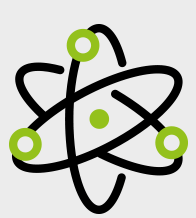The low-carbon transition is an unprecedented challenge.
To answer it, A4MT has developed a new type of approach: the Collective Impact Initiative.
Collective Impact Initiative
How can we design effective engagement programs? By starting from the bottom-up to make everyone a stakeholder of change. That’s the principle of the Collective Impact Initiative: engaging different stakeholders (in a company, an industry segment, a market, etc.) in a truly operational and shared action program, by adopting a structured form of collaboration. This innovative approach is founded on 5 interdisciplinary pillars:
Collective
Impact
Initiative
Common agenda
Common a vision of change based on a shared understanding of the issue and an agreed approach to resolve it.
Shared measurement system
Agreeing on a shared system of analysis and reporting, with a list of performance indicators, in order to measure and communicate progress.
Mutually reinforcing activities
Coordinating efforts among stakeholders to implement a set of differentiated activities and maximize their results.
Continuous communication
Adopting frequent, structured communication to instill confidence, promote compliance and create shared motivation.
Independent support structure
Relying on an independent, dedicated and well-funded teamproviding continuous support to guide its strategy and working with stakeholders to ensure the roll-out and proper operation of shared tools.
A4MT provides the support structure for your action plans
As the support structure, A4MT orchestrates all the other pillars with stakeholders, thanks to:

A dedicated team, led by an experienced program leader specialized in change management and supported by people with specific profiles (scientists, technicians, communicators, etc.) depending on the program field.

Broad and extensive knowledge of both technical and economic aspects, which provides a detailed understanding of the stakes and specificities of each program.

Real know-how in implementing programs in all respects: strategic, technical, logistic, psychological and communication.

An ability to reach decision-makers at higher levels (business organizations, government agencies, legislators, etc.): creation of a national charter for an industry, brainstorming on regulations and standards, etc.
